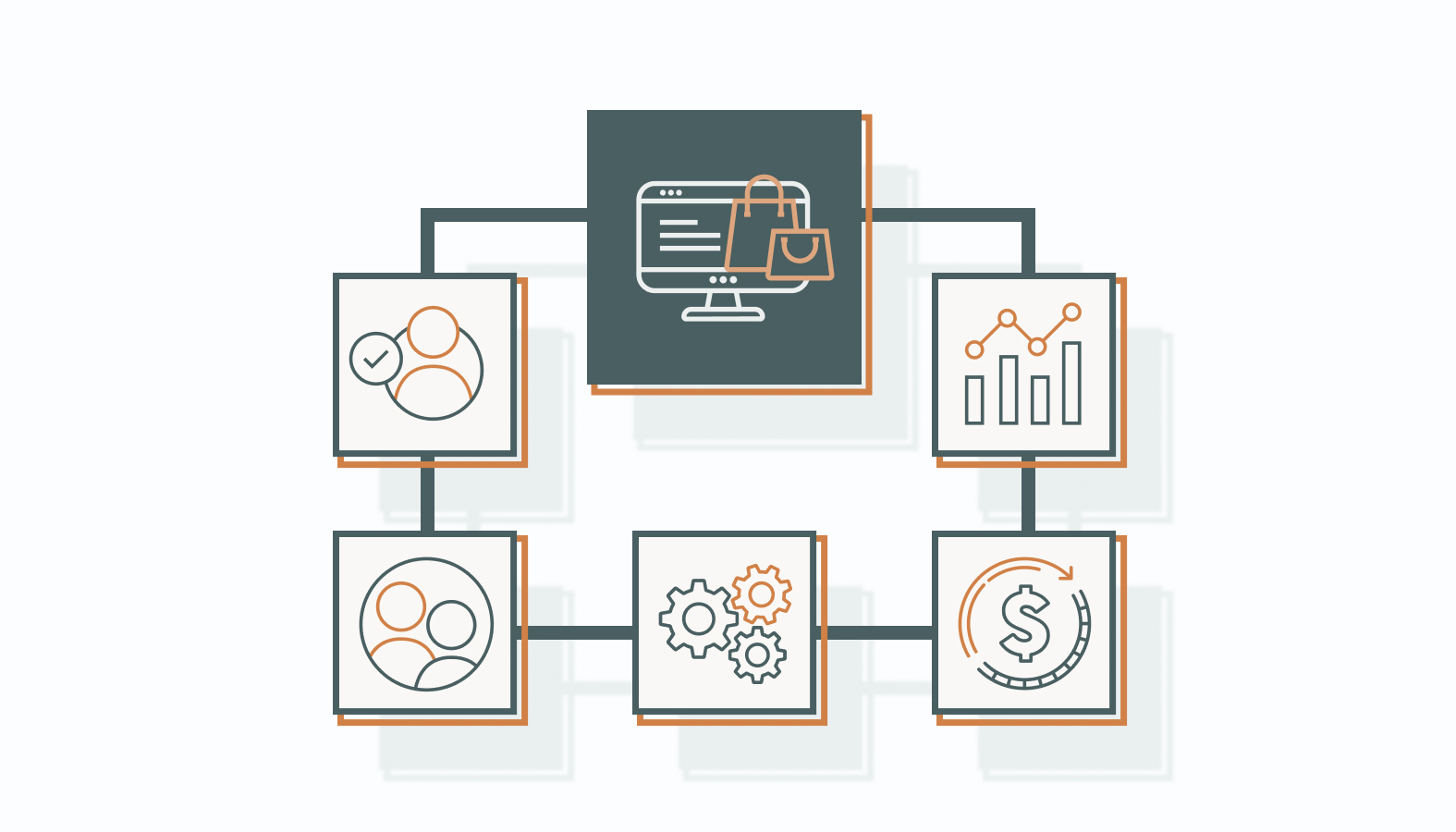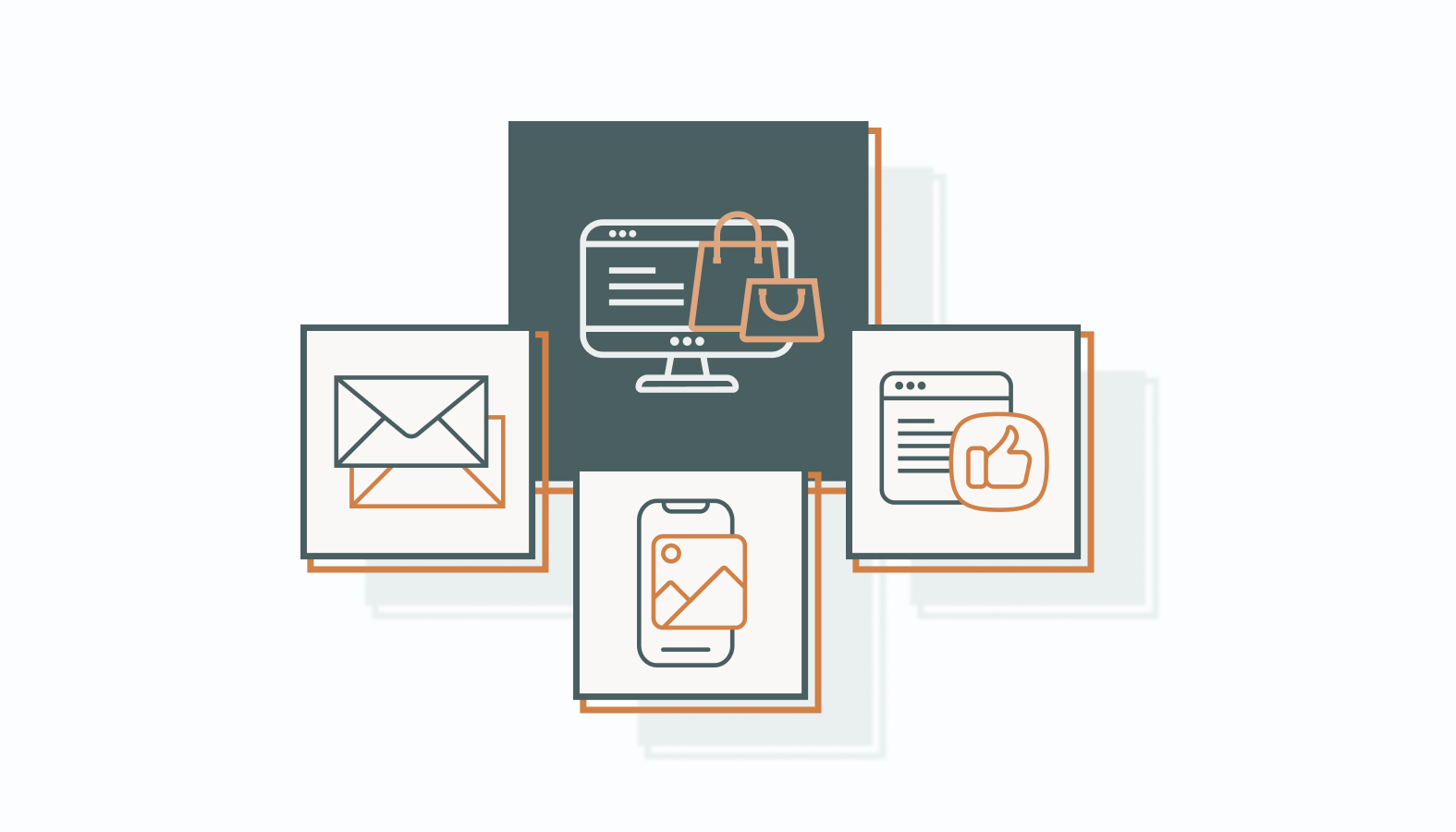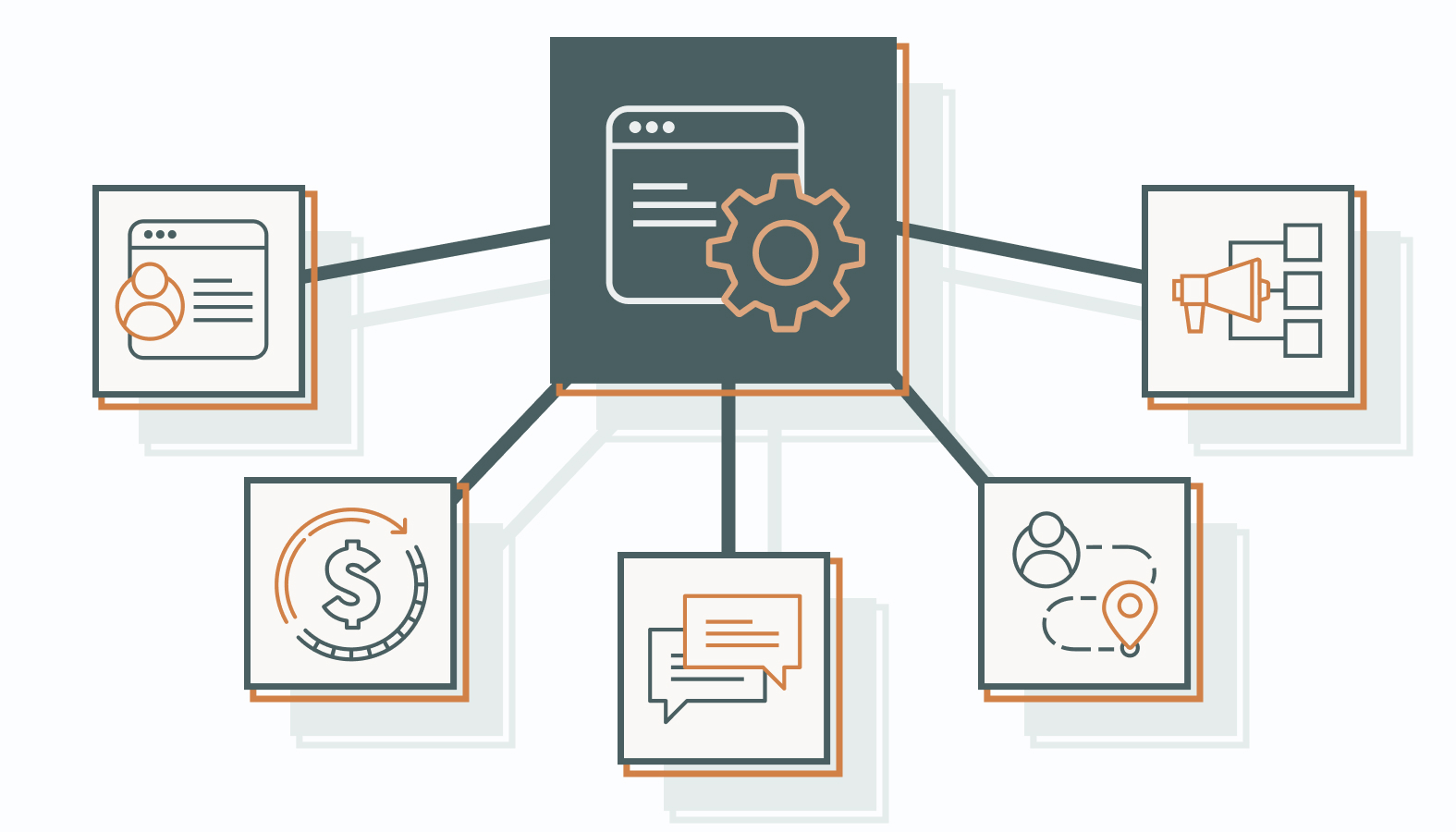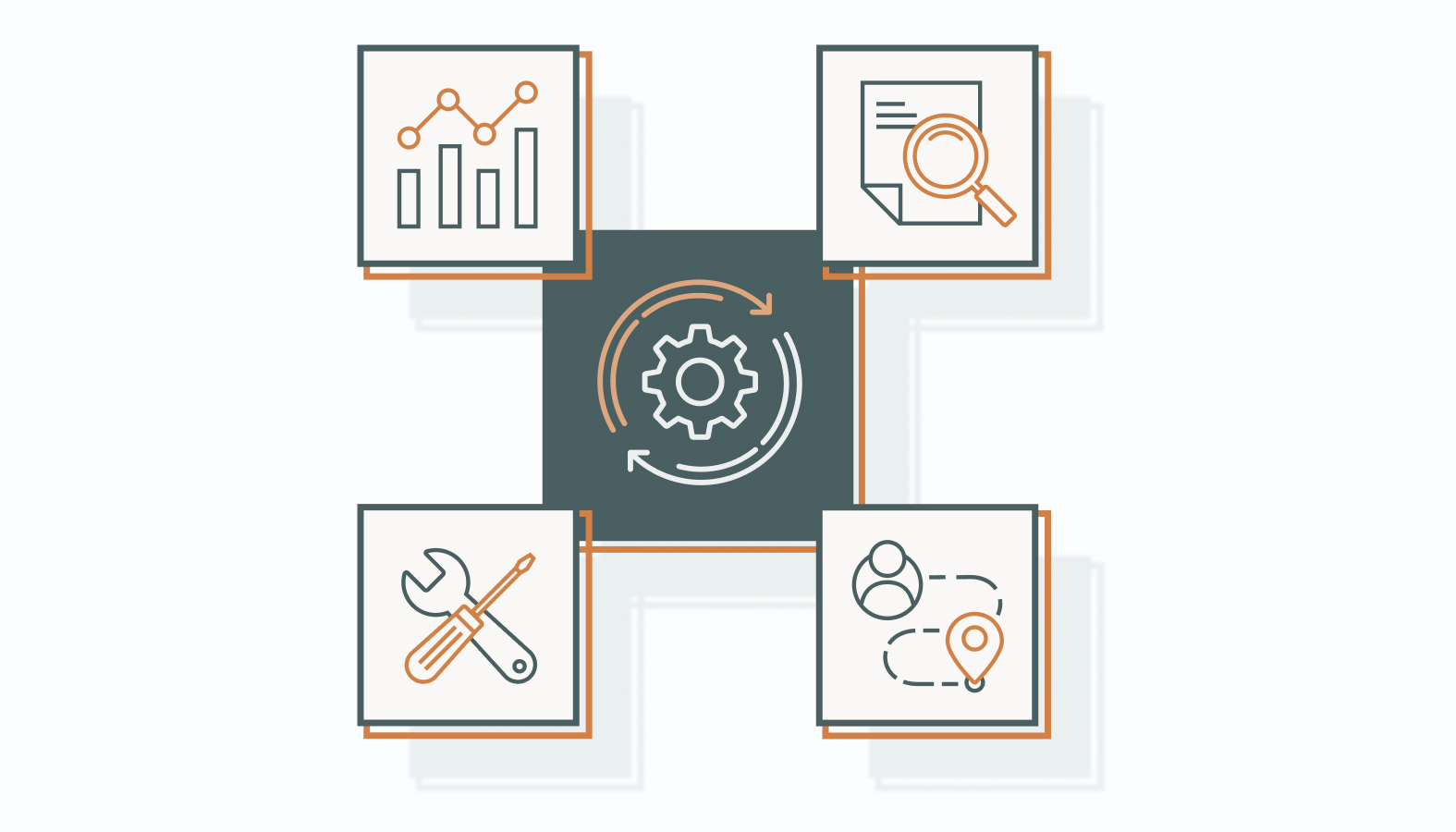If you’re running an ecommerce business in 2025, you’re not just managing products and promotions, but also navigating rising ad costs, shrinking margins, and an overcrowded playing field. Every delay costs more. Every missed opportunity? Already in your competitor’s funnel.
That’s why marketing automation is no longer optional.
When built strategically, it becomes the infrastructure behind sharper targeting, smarter execution, and faster growth. It connects your customer data, campaign flows, and performance insights, so your team can focus on decisions that move the business forward.
In this guide, we break down how leading e-commerce brands utilize automation to streamline operations, personalize at scale, and create seamless, connected customer experiences that drive conversions.
From platform choices to channel strategy and optimization, you’ll see what separates tactical automation from real strategic advantage.
How Ecommerce Marketing Automation Works and Where It Fits
At its core, ecommerce marketing automation is about designing systems that run your campaigns with precision and purpose. The tech handles the heavy lifting; your team focuses on high-leverage work. It’s a time-saver and a control system for scale.
Here’s what effective automation enables:
- Smarter Segmentation: Use behavioral and transactional data to group customers by intent, lifecycle stage, or engagement level.
- Trigger-Based Campaigns: Launch emails, SMS, or in-app messages based on real actions like cart abandonment, repeat visits, or product views.
- Flow Optimization: Build sequences that adapt based on behavior (opens, clicks, purchases), not just fixed timelines.
- Multichannel Sync: Coordinate touchpoints across email, SMS, and even social DMs to deliver a cohesive experience.
- Analytics-Driven Iteration: Track performance across each flow and segment so you’re not guessing, you’re refining.
And why it’s become essential in 2025:
- The number of channels and tools you’re managing has multiplied.
- Customer expectations are higher, with less patience for generic messaging.
- Manual execution introduces friction and missed revenue.
Automation isn’t magic. However, when done correctly, it accelerates the process and gives you control over your funnel, visibility into what’s working, and the ability to adapt at scale.
Let’s break down what automation is really designed to do and where it can go wrong if you’re not careful.
The Advantages of Automating Your Ecommerce Marketing
If you’re serious about scaling this year, manual marketing systems won’t cut it. Customers expect speed, relevance, and consistency — and ecommerce marketing automation is how innovative teams deliver all three without burning out.
This section explains how automation enables you to work more efficiently, think more clearly, and execute at scale across every stage of the customer journey.
1) Smarter Use of Customer Data
Great marketing starts with context. Automation turns scattered activity, such as site visits, email opens, or purchase history, into actionable insights. Not just more data, but better, valuable data.
Real-Time Decision Making
With tools like Klaviyo, HubSpot, and Salesforce Commerce Cloud constantly syncing behavioral data, your campaigns can stop guessing and start reacting.
These platforms don’t just log what happened; they predict what’s likely to happen next. That means sharper targeting, smarter segmentation, and timing that matches buyer intent.
Holistic Customer View
Automation brings clarity across every channel and touchpoint, making it easier to track behavior, spot trends, and pivot quickly.
With the correct setup, your team sees what matters and acts on it in real time.
2) Better ROI without the Bloat
Marketing budgets aren’t getting bigger, but expectations are.
Ecommerce marketing automation helps you stretch the same dollars further by cutting inefficiencies, reducing errors, and shifting your team’s focus to what drives growth explicitly.
Focus on High-Impact Work
Repetitive tasks like email sends, list updates, and data entry? Off your team’s plate.
Platforms like Klaviyo, HubSpot, and Salesforce Commerce Cloud automate the busywork, allowing your marketers to focus on testing, creative development, strategic execution, and other similar work that drives results.
Fewer Mistakes, Leaner Spend
Automated systems don’t miss follow-ups, send to the wrong segments, or waste impressions on outdated lists. They reduce human error, keep timelines tight, and make sure every campaign runs as planned.
More Output, Less Burnout
DTC brands using automation report cutting campaign management time in half—reallocating hours to innovation, not inbox babysitting. With rules for targeting, budgeting, and even inventory triggers, automation ensures every dollar works smarter, not harder.
3) Speeds Up the Sales Process
Speed matters. Automation shortens the distance between interest and purchase by handling what manual processes can’t, such as follow-ups, triggers, and personalized nudges that keep momentum moving.
Frictionless Progression
From lead nurturing to upsells, automation guides customers through your funnel without the usual friction.
Triggers fire based on behavior like sending a discount code to a returning visitor, so the next step happens automatically, not reactively. That means fewer drop-offs and more consistent movement.
Conversion Velocity
No more waiting for a manual follow-up. Automation platforms like Klaviyo and HubSpot handle emails, SMS, and retargeting instantly.
Whether it’s a cart reminder or a time-sensitive offer, your customer gets the right message at the right moment.
As funnels tighten and timelines shrink, conversions speed up. The result? A sales process that scales without slowing down.
4) Stronger Customer Experience at Scale
Consistency builds trust. And trust builds retention.
Automation ensures that every customer touchpoint (across every channel) feels thoughtful, not rushed.
Responsive Without the Lag
Your customers don’t care how busy your team is. They expect fast, relevant responses every time.
Automation handles support follow-ups, post-purchase sequences, and transactional updates without missing a beat. Whether it’s email, SMS, or social, they get the message on time, every time.
Built-in Brand Consistency
Automation platforms like Salesforce Commerce Cloud and Klaviyo help maintain brand voice and timing across all campaigns.
From welcome flows to win-back emails, every interaction feels aligned, intentional, and consistent, regardless of scale.
Proactive, Not Reactive
The best brands don’t just respond—they stay ahead. With automation, you can trigger a birthday discount, a restock alert, or a personalized tip before the customer even thinks to ask. That’s how you stay top-of-mind—and turn one-time buyers into repeat customers.
5) Enhances Personalization Efforts
Generic messaging no longer has an impact. Today’s buyers expect tailored experiences, and automation enables this scalability.
Behavior-Based Messaging
Modern platforms, such as Klaviyo and HubSpot, dynamically adjust messaging in real-time.
A new visitor sees an onboarding flow.
A repeat shopper gets a product recommendation.
Every email, SMS, or pop-up adapts to real behavior, not broad assumptions.
Dynamic, Context-Aware Content
Automation enables every channel — email, site banners, and SMS — to respond in real-time. If a customer browses swimwear, they won’t be shown a winter gear promotion. Instead, they’ll see something relevant, timely, and more likely to convert.
Segmentation Without the Headcount
You don’t need a dedicated team managing every persona. Automated segmentation does the heavy lifting. It organizes customers by behavior, purchase history, or engagement level, providing a more effective way to deliver personalized campaigns with fewer resources.
Personalization used to mean more work. Now it just means well-thought-out systems.
Bottom line: automation delivers both speed and precision. It enables you to scale without sacrificing brand experience, creative control, or strategic focus — what modern e-commerce demands.
Choosing the Right Automation Platform: Make the Investment Count
Choosing an automation platform isn’t about picking the one with the flashiest feature list—it’s about finding the one that fits your growth model.
- Scalability: Startups and mid-market brands have different needs than enterprise operations. Choose a platform that can handle increasing volume, complexity, and segmentation as your business scales. You don’t want to outgrow your tech six months in.
- Integration Flexibility: Your automation platform should plug cleanly into your existing stack, including CRM, ecommerce backend, inventory systems, and support tools. If it doesn’t integrate well, you’ll end up with siloed data and disjointed customer journeys.
- Beyond Basic Features: Email automations are a table-stakes requirement. Look for platforms that support predictive analytics, AI-driven recommendations, multi-channel flows (including email, SMS, and push), and real-time personalization. The right tool should help you think and act faster.
- Ease of Use: A bloated UI kills momentum. Your platform should be intuitive for marketers—not just tech teams. If your team can’t build and launch a campaign without a manual, you’re paying for complexity, not value.
- Support That Actually Supports: Look for providers with responsive support, in-depth documentation, and thriving user communities. When workflows break or you need a workaround, you’ll want a support team that speaks marketer—not just developer.
- Cost and ROI Alignment: Whether pricing is based on contacts, emails, or features, ensure it scales with your business model to optimize cost. Project your ROI: will the time saved, conversions gained, and retention lifted justify the investment? The math should add up—and then some.
Choose strategically. The right platform will support your current campaigns and power the next stage of your growth.
Implementing Ecommerce Marketing Automation Strategies
Marketing automation doesn’t succeed by plugging in tools and hoping for results. Execution matters. The right platforms, paired with the right tactics, create scalable customer experiences that drive growth.
From email to SMS to social, here’s how top ecommerce teams are automating with precision across every touchpoint.
Automating Email Campaigns for Impact
Email remains the beating heart of ecommerce marketing: it’s direct, personal, and one of your highest-ROI channels. With automation, you can turn static campaigns into dynamic customer journeys that nurture, educate, and convert.
Welcome Series and Onboarding
First impressions are leverage. A well-crafted, automated welcome series does more than say “Hello.” It educates new subscribers, sets clear brand expectations, and builds trust from the very beginning.
An automated onboarding sequence can:
- Introduce customers to your brand’s story,
- Showcase top products or categories immediately
- Offer a compelling first-purchase incentive
- Adjust messaging based on signup source or customer tags
- Build trust with reviews, social proof, or brand values
Automation removes timing friction. New subscribers get the right message immediately, not whenever your team gets to it.
By personalizing welcome flows based on signup source or stated preferences, you make every new customer feel truly seen.
Abandoned Cart Recovery
Cart abandoners are warm leads waiting to be reactivated. Automated recovery campaigns swoop in when a customer leaves without making a purchase, reminding them of what they’re missing and closing that loop without chasing manually.
Effective strategies include:
- Sending a series of trigger reminders: 1 hour, 24 hours, and 72 hours post-abandonment as a last-chance nudge
- Auto-populate carts for seamless return
- Personalize product images or limited-time incentives by cart value
- Use social proof (user reviews) or urgency to reinforce buying
Smart automation platforms make it easy to auto-fill carts, personalize product blocks, and send within minutes of abandonment when purchase intent is still fresh. Setting this up allows you to recover revenue that would otherwise be lost.
Leveraging SMS for Direct Customer Interaction
When urgency matters, SMS wins. It’s fast, unfiltered, and usually opened within minutes.
Order Confirmation and Shipping Updates
Customers want instant reassurance after checkout. Automated SMS confirmations and shipping updates keep them informed without logging in or waiting for emails.
- Send instant order confirmation and tracking details
- Automate messages for each shipping milestone
- Reduce support load by answering common post-purchase questions
- Build customer trust with transparent updates
Real-time status updates reduce “where’s my order?” tickets and improve post-purchase sentiment. These aren’t just alerts; they’re part of the experience.
Flash Sales and Time-Sensitive Offers
Nothing drives urgency like a well-timed text. SMS can reach thousands of customers instantly, driving immediate spikes in traffic and conversions. It’s perfect for alerting your audience about flash sales, exclusive drops, or limited-time offers.
- Send alerts for VIP access, price drops, or new arrivals
- Use SMS-specific offers to drive fast action, especially on last-minute campaigns
- Layer on urgency with countdowns or “only X left” CTAs
- Segment lists to avoid fatigue and stay relevant
Automation enables you to segment audiences by past purchases or loyalty tiers, ensuring you’re not sending the same deal to everyone. Combine with countdown timers or VIP tags for added lift.
Streamlining Social Media Engagement
A dormant social presence sends the wrong signal. Automation keeps your brand visible, responsive, and consistent—without draining resources.
Scheduled Posts
Consistency wins attention. Automated scheduling platforms, such as Buffer and Later, help you maintain a steady cadence without needing to log in daily.
- Plan content calendars weekly or monthly in advance
- Maintain cross-platform consistency with unified scheduling
- Set posting times based on historical performance
- Reserve bandwidth for higher-impact creative and strategy
Map content across platforms like Instagram, Facebook, and LinkedIn. Then, focus your energy on creative planning, not last-minute publishing. This structure gives your team room to optimize performance, not just keep up.
Automated Response
Speed matters when customers reach out. Automated replies acknowledge messages instantly, even during off-hours.
- Deploy quick replies for FAQs or return policies
- Route high-priority messages to support instantly
- Keep tone consistent with brand voice templates
- Acknowledge all comments and DMs, even outside business hours
Use smart replies to route FAQs, provide links, or confirm receipt. Let automation bridge the gap until a human steps in. The result: faster service, higher satisfaction, and fewer missed opportunities.
Adopt these automation strategies across email, SMS, and social, and you build a marketing engine that runs smarter, not harder. The right platform doesn’t just lighten the load, but also sharpens your execution and strengthens every customer interaction.
Elevating Your Ecommerce Automation with Advanced Tactics
Ecommerce is moving fast. The brands pulling ahead aren’t just efficient; they’re utilizing automation and other advanced strategies to innovate, adapt, and drive sustained growth.
With AI (artificial intelligence), machine learning, and clever orchestration, automation becomes a revenue engine and a key advantage in customer experience.
Intelligent Customer Segmentation with AI
AI has redefined what customer segmentation can do. Instead of basic filters, machine learning analyzes hundreds of data points, including browsing patterns, purchase habits, and engagement timing, to uncover customer behavior that humans can’t spot at scale.
- Sharper Targeting: AI groups customers into precise segments like “repeat buyers with declining activity” or “seasonal high spenders,” unlocking smarter messaging and better-timed offers.
- Scalable Personalization: You’re no longer guessing at product recommendations or send times. AI lets you serve dynamic content and smart offers tailored to real-time behavior—automatically, at scale.
The result: relevant messaging, higher engagement, and conversion journeys that feel custom-built for each buyer, even at scale.
Maximizing Revenue through Automation
When built strategically, automation lightens the load and actively grows the business by capturing and converting revenue that would otherwise slip through the cracks.
- Upsells and Cross-Sells: Post-purchase product recommendations, bundle upgrades, and tiered rewards can be triggered instantly based on what your customer just bought—or nearly bought.
- Real-Time Pricing and Inventory: Automation can adjust pricing based on inventory levels or demand, and notify customers when favorites are back in stock. That keeps urgency high and lost sales low.
- Lapsed Customer Reactivation: Past customers don’t always need a phone call. Smart flows can win customers back by re-engaging them with personalized incentives tailored to the time since their last purchase, their lifetime value, or their product interests.
Ultimately, automation gives your revenue team leverage, capturing opportunity while your ops stay lean.
Enhancing Customer Interaction with Chatbots
Chatbots quietly handle one of the hardest jobs in ecommerce: customer support at scale. They don’t replace humans; they give your team the space to focus where it matters.
- 24/7 Responsiveness: Whether it’s 2 PM or 2 AM, chatbots deliver order updates, policy info, and product answers instantly without holding up the queue.
- Effortless Scale: Whether you have 100 or 10,000 users online, bots keep interactions running smoothly while your human agents handle high-impact tickets.
That speed keeps buyers engaged and nudges hesitant customers toward checkout without manual effort.
Automating the Customer Lifecycle Journey
Every customer goes through a journey, and automation makes sure they’re not navigating it alone. The right flows keep momentum building from the first visit to repeat purchase.
- Lifecycle Campaigns: Triggered messages welcome new subscribers, onboard first-time buyers, and reward loyal customers with intentional timing and value.
- Behavior-Based Touchpoints: Whether someone browses a collection, hits a loyalty milestone, or drops a five-star review, automation lets you follow up immediately with personalized, relevant messaging.
It’s a full-funnel approach that turns one-time buyers into brand advocates and ensures buyers keep moving forward and that no opportunity for engagement is missed.
Orchestrating Multi-Channel Campaigns
Your customers constantly switch between devices and platforms. A unified automation strategy ensures they get a connected brand experience wherever they are. It also empowers you to coordinate email, SMS, social, or website-based campaigns all from a single dashboard.
- Consistent Brand Voice: When your campaigns sync across email, SMS, push, and social, you show up with the same clarity and message, no matter where the interaction happens.
- Channel-Specific Triggers: If someone clicks an email but doesn’t convert, automation can follow up with a tailored SMS or retargeted ad, closing the loop and boosting conversion rates.
The result is a campaign ecosystem that feels smart, coordinated, and customer-centric from end to end.
By implementing advanced automation tactics like these, you’re not just speeding things up. You’re building an agile, data-driven operation ready to scale with precision and stay ahead as ecommerce evolves.
Measuring Success: KPIs That Prove Automation Is Working
Building smart automation is only half the equation. The other half? Proving it works.
To scale with precision, you need to track more than just clicks and opens. Modern ecommerce teams measure automation impact across revenue, retention, and resource efficiency. Here’s where to focus.
- Conversion Rates by Flow.
It’s not just about overall conversion; dig into performance by flow.
Is your abandoned cart sequence closing the loop? Is your welcome series driving that critical first purchase?
Automation should not only maintain the baseline, but also lift these numbers.
- Customer Lifetime Value (CLTV).
Automation excels in extending customer relationships.
Personalized product suggestions, loyalty touchpoints, and post-purchase flows all compound to boost CLTV.
Track how engaged your repeat buyers are, and whether your automations are keeping them warm.
- Retention and Re-Engagement.
If churn’s your silent killer, automation is your proactive defense.
Monitor how many lapsed customers re-engage after receiving personalized offers or win-back sequences. The more timely and relevant the outreach, the stronger your retention rate will be.
- Average Order Value (AOV).
Upsell and cross-sell automations — like “complete your set” emails or post-purchase bundles — should nudge AOV upward.
If your average basket is growing, automation’s doing its job.
- Time and Cost Savings.
Track task reduction: how many hours per week have you reclaimed from manual campaign work?
If automation is freeing up your team to focus on strategy and creativity, that’s operational ROI you can measure.
- Email Engagement Metrics.
Look at open rates, CTR, and unsubscribes in the context of your automated flows.
Triggered, personalized messages should consistently outperform generic blasts. If they don’t, it’s time to optimize.
Proven Practices for Successful Ecommerce Automation
Ecommerce automation only works if the foundation is solid. The brands that get it right blend the right tools with sharp oversight and a relentless focus on customer experience.
Here are the practices that separate automated chaos from consistent performance.
Ensuring Data Security and Compliance
Today’s ecommerce landscape is built on data, which makes protecting that data a top priority. Automation should accelerate growth, but it must never compromise security or compliance.
- Data Security: Encrypt sensitive information, run regular security audits, and rely on platforms that publish their certifications and security protocols. If your provider can’t explain their protection standards, look elsewhere.
- Compliance: Stay aligned with global and regional regulations like GDPR, CCPA, and PCI DSS. Look for automation platforms that offer built-in consent management, anonymization tools, and clear opt-out options.
A strong compliance posture keeps you legally covered and sends a clear message to customers that their data is safe with you.
Ongoing Campaign Refinement
Automation should never mean “set it and walk away.” The best strategies evolve. Staying sharp means watching what works and adapting before things go stale.
- Continuous Improvement: Track key metrics, including open rates, conversions, and lifetime value. Run A/B tests to validate changes before scaling them.
- Customer Feedback: Use surveys, reviews, and behavioral signals to understand where you’re connecting and where you’re falling short.
- Ongoing Optimization: Adjust flows, fine-tune timing, and refine segmentation. Think of automation as a living organism. Feed it, monitor it, and keep it learning.
This discipline keeps your campaigns responsive, relevant, and a step ahead of customer expectations.
Achieving Seamless Platform Integration
Automation delivers the most value when it’s deeply integrated into your tech stack, rather than being left isolated. Real power emerges when systems communicate and share data in real-time.
- Unified Data: Connect your ecommerce automation with your CRM, inventory, and customer service stack. Eliminate silos and keep customer data accurate, visible, and actionable.
- Operational Efficiency: Integrated tools reduce manual work and enable automation to be truly reactive. Customer clicks an ad? Inventory drops below threshold? The right trigger fires instantly.
- Built-In Scalability: With the right integrations, you can grow into new channels and workflows without rebuilding your infrastructure every time.
Strong integrations keep your backend clean and your customer experience seamless from the first touch to final delivery.
Mapping the Customer Journey for Success
You can’t automate what you haven’t mapped. Understanding the entire customer journey enables you to design flows that align with behavior, intent, and timing.
- Strategic Mapping: Visualize each stage of the lifecycle, from the first visit to the third repeat purchase. Pinpoint common drop-off points and interaction highs.
- Automated Touchpoints: Build triggers around meaningful actions, such as abandoned carts, product reviews, or loyalty thresholds. Time your messaging to coincide with when it’s most likely to convert.
- Personalization at Scale: When you know the journey, you can deliver messaging that feels personal even as your automation scales. No generic blasts, just relevant nudges.
Journey-based automation ensures your campaigns work in sync with your buyers, which in turn creates smoother paths and higher ROI.
Master these practices, and automation becomes more than a time-saver. It turns into a competitive asset that scales your business, protects your data, and keeps your customers coming back.
From Automation to Acceleration: Your Strategy Starts Here
Winning in ecommerce today takes more than plugging in tools. You need a connected, evolving automation strategy that keeps your team fast, your systems sharp, and your customer experience airtight.
Here’s a recap of the practices that separate tactical automation from strategic advantage:
- Use Data to Drive Decisions: Power your campaigns with real-time behavioral data. When insights lead, messaging gets sharper and targeting becomes more precise.
- Personalize at Scale: Leverage dynamic content and AI-driven segmentation. Customers should feel like you’re speaking directly to them, no matter the audience size.
- Choose the Right Platform for Growth: Select tools that scale with your business, integrate cleanly, and offer the depth your team needs. A strong foundation makes everything else work better.
- Reclaim Time for Strategy: Automate repetitive work so your team can focus on creative thinking and strategic execution.
- Shorten the Path to Purchase: Use triggers, follow-ups, and streamlined flows to keep the sales cycle moving quickly and efficiently.
- Unify Every Touchpoint: Sync email, SMS, and social messaging to create one cohesive customer experience across all channels.
- Protect Data and Build Trust: Lead with strong security practices and compliance tools. Customer trust is earned, not assumed.
- Treat Automation as a System: Integrate platforms, test constantly, gather feedback, and refine over time. The best automation strategies never stand still.
- Build Around the Customer Journey: Map real behavior and use automation to engage, convert, and retain customers at every phase.
- Measure What Drives Results: Monitor KPIs like conversion rates, CLTV, AOV, and engagement metrics to measure real impact. Smart automation is accountable and optimized through data.
Ecommerce brands that lead in 2025 and beyond won’t just automate for the sake of automating. They’ll use automation to evolve, compete, and stay relentlessly customer-focused.
Ready to Make Your Automation Strategy Work Harder?
You’ve seen what modern ecommerce automation can do when it’s built with purpose. If you’re rethinking your approach, or want a clear outside perspective, let’s talk.
Whether you’re optimizing existing workflows, evaluating new platforms, or trying to connect all the dots across channels, our team’s been there. No pitches, just straightforward insights from people who know what works.
Schedule a candid conversation with one of our automation strategists. » We’ll review your setup, explore your goals, and help you move forward with clarity.










